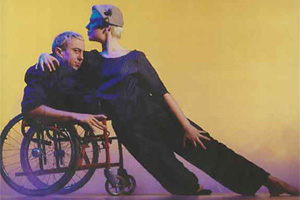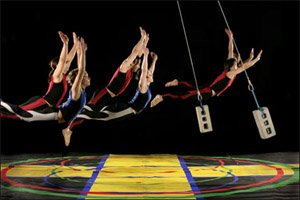Introduction: Bodies and Machines


The purpose of this section of Accelerated Motion is to explore the interconnections between bodies and machines in contemporary dance. We will look at a variety of choreographies that incorporate machines or devices of various sorts in order to extend the movement capacities of human bodies. We will also investigate how we use machines in our daily lives, culling movement possibilities from these interactions. Mostly importantly, however, these discussions will lead us to reflect on the myth of the dancer’s body as a perfect, well-oiled, and efficiently working machine. This, in turn, will help us understand how physical limitations, rather than restricting our access to dance, might inspire new movement possibilities, leading us to re-imagine which bodies can be seen as dancing bodies.
All human bodies share an extensive number of similarities, yet individual bodies vary widely in movement capacity, including such factors as size, strength, and flexibility among others. Some bodies are severely limited by specific physical restrictions in motion while others are maximized through the practice of a variety of training systems. Moreover, the same body undergoes changes in capacity throughout the life cycle. Dancing bodies come in a range of sizes, shapes, ages and skill levels, an important notion to consider in a democratic society whose constitutional values espouse egalitarian ideals regarding inclusion and access.
General Discussion Topics
- What is a “normal” body? Explain.
- How can bodily capacities be altered by machines?
- Does gender play a role in the kinds of skills or capacities a body can have?
- Does age play a role in the kinds of skills or capacities a body can have?
- Do physical abilities determine or influence an individual’s social value?
- How are bodies with specific physical challenges valued and/or restricted from participation in public life?
- How are bodies with extraordinary physical skills valued and/or restricted from participation in public life?
- How does the U.S. government address public rights for persons with varying physical abilities?
Note for Teachers
Challenge students to consider the full range of physical ability, and to use descriptive vocabulary when commenting, e.g. “persons who cannot walk have restrictions in mobility but can increase their capacity through the use of wheelchairs,” or “persons with enhanced physical abilities are privileged in U.S. society through the social prominence accorded to athletic achievement,” etc.

